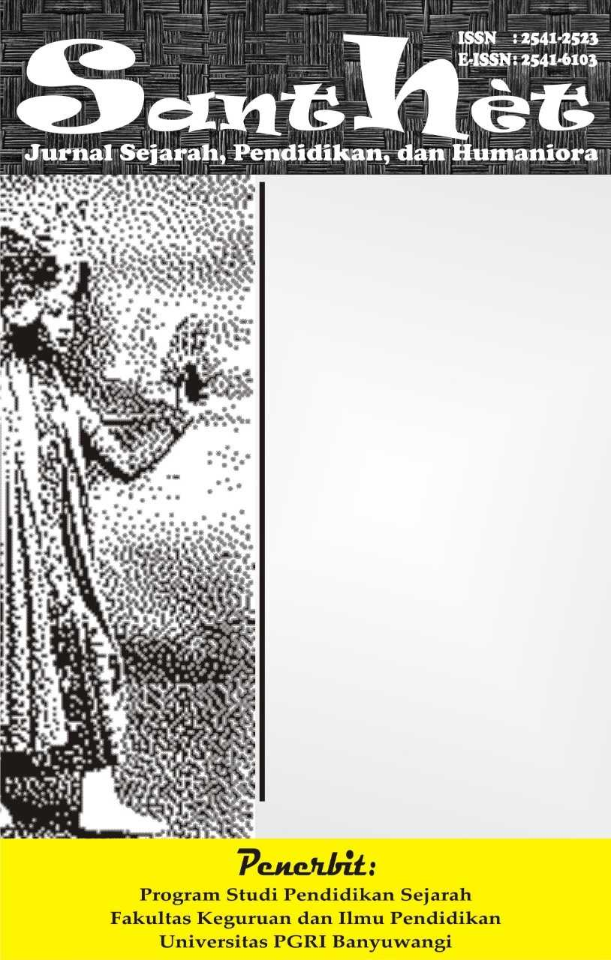Pelaku Bullying Ditinjau Dari Perspektif Teori Identitas Sosial Sebuah Systematic Review Literature
DOI:
https://doi.org/10.36526/santhet.v8i1.3926Keywords:
Bullying, Social Identity Theory, InterventionAbstract
This study investigates bullying behavior from the perspective of social identity theory. Bullying is a serious issue affecting the well-being of individuals in schools and communities. The primary aim of this research is to explore how identification with specific social groups influences bullying behavior. The methodology employed is a systematic literature review focusing on inclusion criteria related to social identification, group dynamics, status and power, and contextual factors. Key findings indicate that social identification plays a pivotal role in bullying behavior, while group dynamics, social status, and influences from school, family, and social media contexts are also significant. The research findings carry significant implications for enhancing anti-bullying efforts, primarily by focusing on the development of more impactful interventions. It is vital to prioritize the creation of safe and inclusive school environments as a key aspect in combating bullying effectively.
References
Agatston, P. W., Limber, S., & Kowalski, R. M. (2012). Cyberbullying: Bullying in the digital age. Wiley-Blackwell.
Bandura, A., & Walters, R. H. (1977). Social learning theory (Vol. 1). Englewood cliffs Prentice Hall.
Brown, R., & Hewstone, M. (2005). An integrative theory of intergroup contact. Advances in Experimental Social Psychology, 37(37), 255–343.
Craig, W. M., & Pepler, D. J. (2007). Understanding bullying: From research to practice. Canadian Psychology/Psychologie Canadienne, 48(2), 86.
Dickson, R. (2017). Doing a Systematic Review-a Students Guide. Sage Publications Limited.
Dodge, K. A., Bates, J. E., & Pettit, G. S. (1990). Mechanisms in the cycle of violence. Science, 250(4988), 1678–1683.
Egger, M., Smith, G. D., & Altman, D. (2008). Systematic reviews in health care: meta-analysis in context. John Wiley & Sons.
Espelage, D. L., & Holt, M. K. (2001). Bullying and victimization during early adolescence: Peer influences and psychosocial correlates. Journal of Emotional Abuse, 2(2-3), 123-142.
Espelage, D. L., & Swearer, S. M. (2004). Bullying in American schools: A social-ecological perspective on prevention and intervention. routledge.
Espelage, D. L., & Swearer, S. M. (2010). Bullying in North American schools. Routledge.
Fink, A. (2019). Conducting research literature reviews: From the internet to paper. Sage publications.
Hawley, P. H. (1999). The ontogenesis of social dominance: A strategy-based evolutionary perspective. Developmental Review, 19(1), 97–132.
Hewstone, M., Rubin, M., & Willis, H. (2002). Intergroup bias. Annual Review of Psychology, 53(1), 575–604.
Hogg, M. A. (2001). A social identity theory of leadership. Personality and Social Psychology Review, 5(3), 184–200.
Jetten, J., Haslam, S. A., & Haslam, C. (2012). The case for a social identity analysis of health and well-being. In The social cure (pp. 3–19). Psychology Press.
Juvonen, J., & Galván, A. (2008). Bullying as a group process: Participant roles and their relations to social status within the group. Aggressive Behavior, 34(3), 230-241.
Nesdale, D. (2004). Social identity processes and children’s ethnic prejudice. In The development of the social self (pp. 233–260). Psychology Press.
Oakes, P. J., Turner, J. C., Hogg, M. A., Reicher, S. D., & Wetherell, M. S. (1987). Rediscovering the social group: A self-categorization theory. Oxford, England: Blackwell.
Ojala, K., & Nesdale, D. (2004). Bullying and social identity: The effects of group norms and distinctiveness threat on attitudes towards bullying. British Journal of Developmental Psychology, 22(1), 19–35.
Olweus, D. (2023). Bullying at school: What we know and what we can do. Blackwell Publishing.
Parker, J. G., & Asher, S. R. (1993). Friendship and friendship quality in middle childhood: Links with peer group acceptance and feelings of loneliness and social dissatisfaction. Developmental Psychology, 29(4), 611.
Patchin, J. W., & Hinduja, S. (2010). Cyberbullying and self‐esteem. Journal of School Health, 80(12), 614–621.
Reicher, S. (2004). The context of social identity: Domination, resistance, and change. Political Psychology, 25(6), 921–945.
Salmivalli, C. (2010). Bullying and the peer group: A review. Aggression and Violent Behavior, 15(2), 112–120.
Sidanius, J., & Pratto, F. (2001). Social dominance: An intergroup theory of social hierarchy and oppression. Cambridge University Press.
Smith, P. K., & Brain, P. (2000). Bullying in schools: Lessons from two decades of research. Aggressive Behavior: Official Journal of the International Society for Research on Aggression, 26(1), 1–9.
Spears, R., Doosje, B., & Ellemers, N. (1997). Self-stereotyping in the face of threats to group status and distinctiveness: The role of group identification. Personality and Social Psychology Bulletin, 23(5), 538–553.
Subardhini, M. (2017). Psychosocial Therapy Intervention Using Group Work for Women Experiencing Domestic Violence in Indonesia. Asian Social Work Journal, 2(2), 42–54.
Subardhini, M., Riyadi, S., & Sakroni, S. (2024). Implementation of Behavior Modification Techniques for Children with Low Social Skills (A Case Study at the Social Protection Service Unit for Children in Garut, West Java). Santhet (Jurnal Sejarah Pendidikan Dan Humaniora), 8(1), 932–943. https://doi.org/10.36526/santhet.v8i1.3885
Subardhini, M., & Sakroni, S. (2021). Counseling in Social Work Practices during the Covid-19. WELFARE: Jurnal Ilmu Kesejahteraan Sosial, 10(2), 190–203.
Tajfel, H., Turner, J. C., Austin, W. G., & Worchel, S. (1979). An integrative theory of intergroup conflict. Organizational Identity: A Reader, 56(65), 9780203505984–16.
Van Dick, R., Wagner, U., Stellmacher, J., & Christ, O. (2004). The utility of a broader social identity for organizational research. Group & Organization Management, 29(1), 66-100.
Veenstra, R., Lindenberg, S., Oldehinkel, A. J., De Winter, A. F., Verhulst, F. C., & Ormel, J. (2005). Bullying and victimization in elementary schools: a comparison of bullies, victims, bully/victims, and uninvolved preadolescents. Developmental Psychology, 41(4), 672.





























